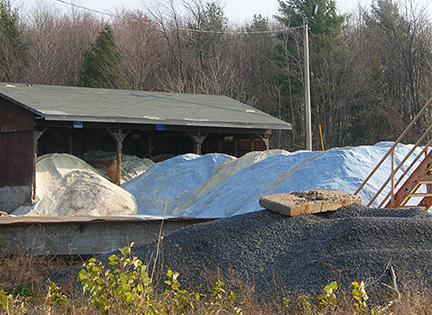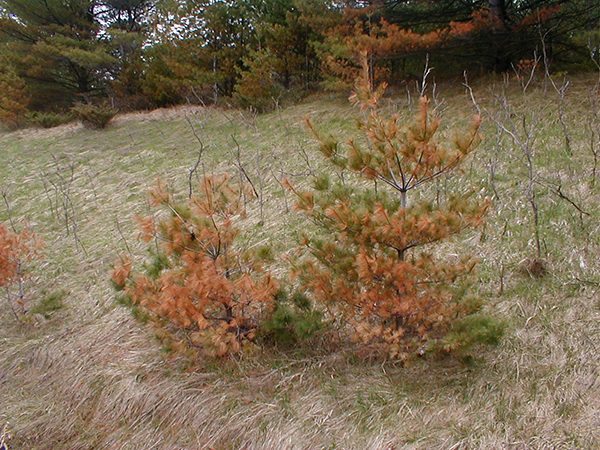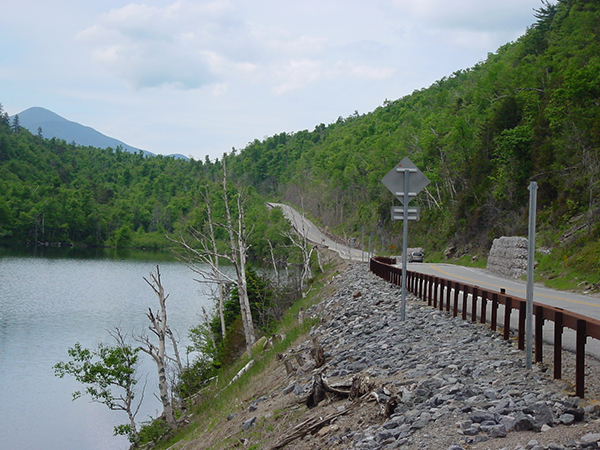
Road Salt Contamination Serious, Prompts State Pilot Program
By: John Sheehan - Adirondack Council Director of Communications
Wednesday, June 13, 2018
With more than 5,000 miles of public highways in the Adirondack Park, even small decisions about seasonal maintenance can have a major impact on the Park’s long term health.
A recent study by Paul Smith’s College Adirondack Watershed Institute (AWI) of 358 private wells scattered across the Adirondack Park found that salt used to clear ice and snow from roads in the wintertime is contaminating groundwater and seeping into private wells at an alarming rate. Sponsors of the research study included Adirondack Action, Fund for Lake George and Paul Smith’s College. The Institute and study sponsors have been working closely with the Adirondack Road Salt Working Group led by Town of Wilmington Supervisor Randy Preston.

The Council applauds this work and has long been an advocate for addressing the impacts of road salt on our water resources and reducing its use in the Park.
In Lake Placid, the Ausable River Association (AsRA) and others are working to rid Mirror Lake of the salt layer lurking at its bottom, which was first reported by AsRA Science & Stewardship Director Brendan Wiltse. His teams have been testing and recommending alternative de-icers for a while, and will also be part of the DOT’s new pilot program announced in late May designed to focus new protection methods on Mirror Lake, Lake George and Wilmington.
The AWI Executive Director Daniel Kelting checked other lakes near state highways and found similar elevated chlorine and sodium (the two main ingredients of salt). That prompted a desire for a more comprehensive look at not just surface waters, but sub-surface drinking water supplies. That is the report that was just completed.
Speaking at the Saranac Lake Free Library last week, Kelting reported his findings to officials from several state agencies, including the Departments of Transportation (DOT), Health and Environmental Conservation. The study -- funded by AdkAction and the Fund for Lake George -- found that heavy use of salt on state highways caused most of the well contamination.
 Young pine trees along I-87 (the Adirondack Northway) damaged by road salt.
Young pine trees along I-87 (the Adirondack Northway) damaged by road salt.
State highways comprise only 25 percent of the roads in the Adirondack Park, yet they receive 55 percent of the road salt applied each year. Town and county roads are maintained by local highway departments. They also apply salt to roads, but they don’t use it in the same way. Some local roads are not salted at all, while others are salted on an as-needed basis. State highway crews follow strict rules on when to apply salt and how much to apply.
The AWI study included 132 wells with no road runoff, 114 with state road runoff and 112 with local road runoff. Study participation was voluntary. Homeowners who volunteered received a sampling kit with instructions and mailed in their samples. Kelting collected and analyzed the data.
Annually, 192,700 tons of road salt are applied to Adirondack roads. Town and county roads receive 10 tons per lane mile per year, while state roads get 37 tons per lane mile per year. The use of road salt began around 1980. Kelting said 6,937,200 tons of salt have been applied to the roads since then, or a ton for every acre of land in the Park.
Roughly one-third of our lakes have road salt in them. Some 52 percent of our streams have been salinized to some extent.
 Birches along Route 73 damaged by road salt.
Birches along Route 73 damaged by road salt.
Due to the coarseness of local soil, water flows easily from the surface into groundwater supplies, affecting ecosystems, human health, automobiles, snow-removal equipment and property values.
Many of the wells tested were found to be exceeding Health Department guidelines of less than 20 parts per million of sodium. The natural salinity of water in the Adirondacks, found in wells unaffected by road salt, is less than 0.5 ppm.
Pilot program
Recently, AdkAction and the state DOT announced a pilot program to reduce the use of road salt on state highways. Areas around Mirror Lake, Wilmington and Lake George have been chosen to test methods to keep roads clear while reducing salt usage.
Highway crews will use double blades and live-edge plow blades to remove more snow and ice from the roads; use treated salt, which is more effective at colder temperatures; use Automatic Vehicle Location technology, which tracks salt application rates and calibrates salt-spreading equipment will help equipment operators know how much salt they’re using; evaluate cutting back some of the tree canopy to reduce shade on the roads; and try reduced seasonal speed limits.
|





